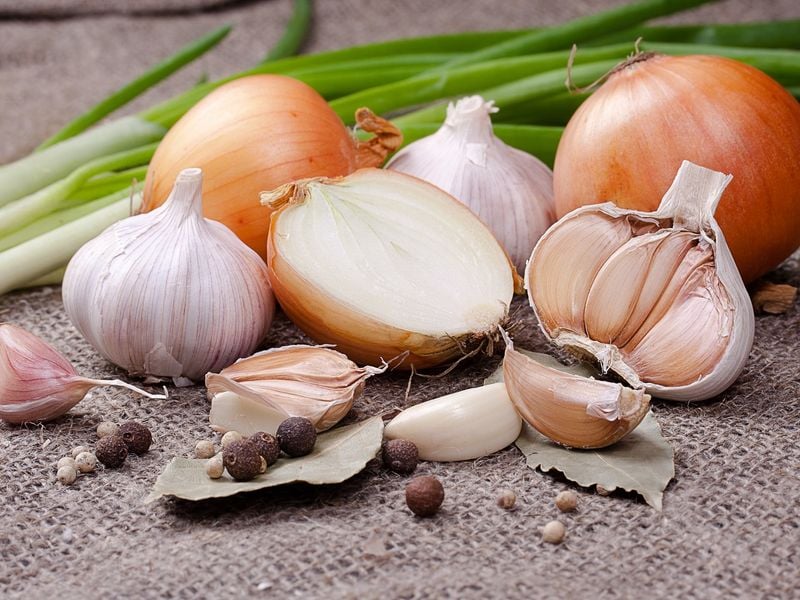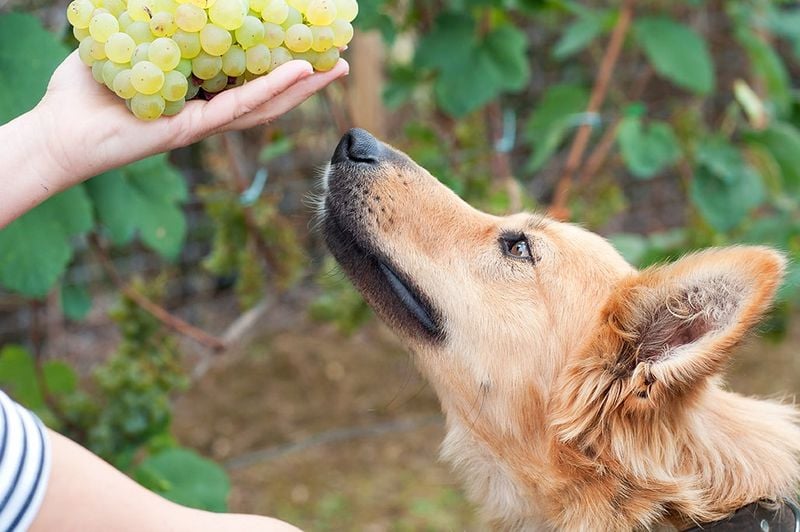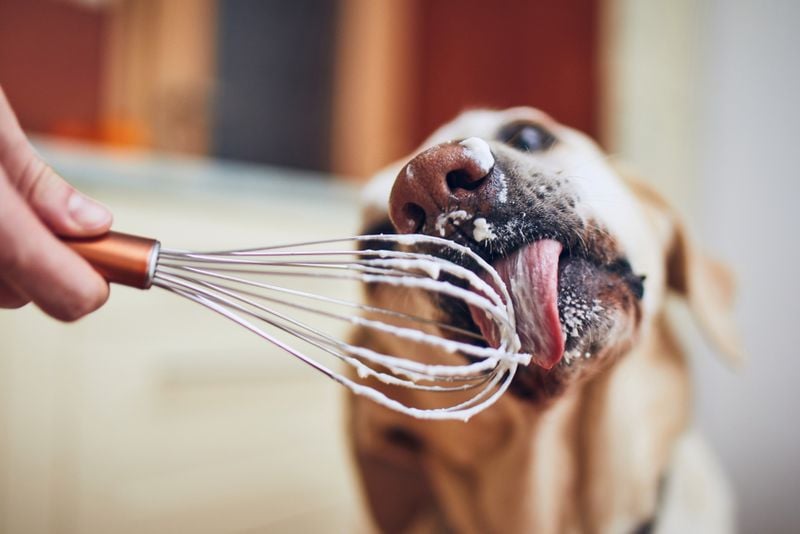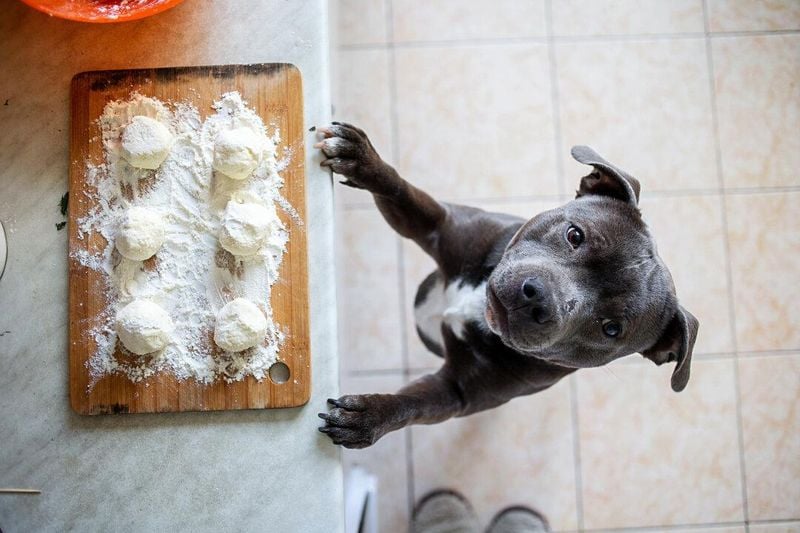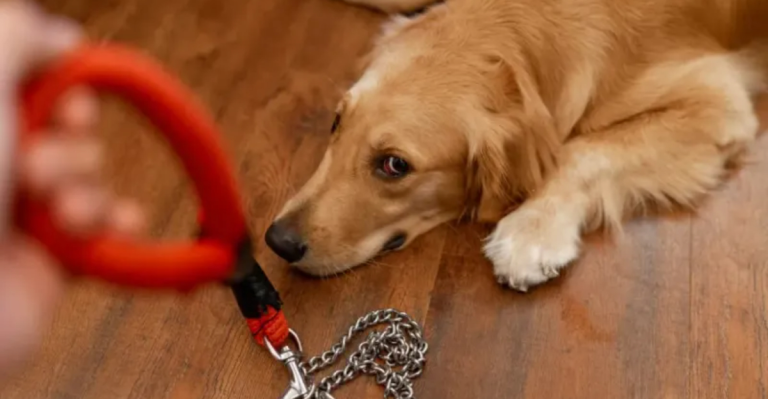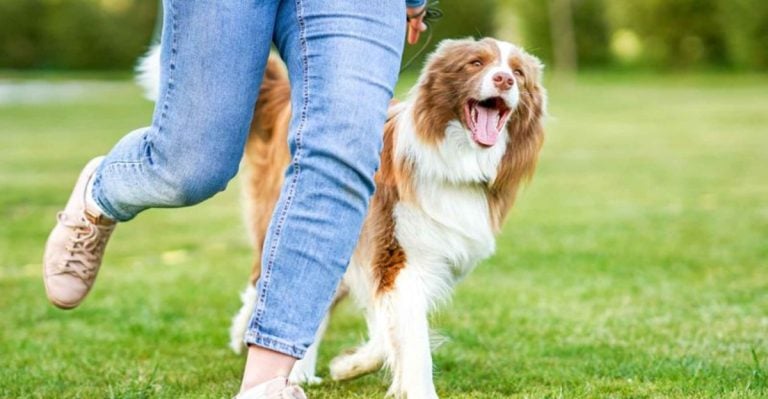9 Common Kitchen Staples That Are Surprisingly Toxic to Dogs
Your kitchen might be a cozy haven for family meals, but it can hide some serious dangers for your furry friend. Many everyday foods we enjoy without a second thought can make dogs seriously sick or even be fatal.
Knowing which common kitchen staples pose risks to your pup could literally save their life. Let’s explore nine ordinary foods that should always be kept well out of your dog’s reach.
1. Onion Family Dangers
The entire onion family – including garlic, leeks, and chives – contains compounds that damage your dog’s red blood cells. Even small amounts mixed into leftover pasta sauce or pizza can trigger harmful reactions.
Symptoms might not appear immediately, which makes these vegetables especially dangerous. Watch for weakness, vomiting, or breathlessness days after potential exposure.
Keep chopping boards clean and store these items where curious paws can’t reach them. Remember that powdered forms in spice cabinets are equally toxic, so secure those jars and packets away from counter-surfing dogs.
2. Chocolate’s Hidden Threat
Your favorite sweet treat contains theobromine and caffeine, substances dogs simply cannot metabolize effectively. Dark chocolate and baking chocolate pose the greatest risks due to their higher concentration of these compounds.
Even a small amount can cause vomiting, increased heart rate, seizures, and in severe cases, death. The smaller your dog, the less chocolate it takes to cause serious harm.
Store chocolate in closed cabinets or on high shelves, especially during holidays when treats are abundant. Be particularly vigilant about cocoa powder and baking chocolate, which can be lethal even in small quantities.
3. Grape and Raisin Toxicity
Scientists haven’t pinpointed exactly why grapes and raisins are toxic to dogs, but the danger is very real. Some dogs can eat a few with no problems while others suffer kidney failure from just a single grape.
Because there’s no way to predict which dogs are more susceptible, it’s best to avoid these fruits entirely. Symptoms include vomiting, lethargy, and decreased urination as kidney function deteriorates.
Check ingredient lists carefully – many baked goods and trail mixes contain raisins. Keep fruit bowls out of reach and teach children never to share their grape snacks with the family dog.
4. Xylitol: The Sugar Substitute Menace
Found in sugar-free gum, candies, baked goods, and even some peanut butters, xylitol causes a dangerous insulin surge in dogs. This artificial sweetener tricks your dog’s body into releasing insulin, rapidly dropping blood sugar levels to life-threatening lows.
As little as two pieces of gum can cause hypoglycemia in a medium-sized dog. Symptoms include coordination problems, collapse, seizures, and liver failure.
Always check labels before sharing foods, especially peanut butter which is commonly used to hide medications. The rise of keto and sugar-free products means xylitol is appearing in more products than ever before.
5. Macadamia Nut Mysteries
These buttery, delicious nuts might enhance your cookies, but they spell trouble for your four-legged friend. Dogs who consume macadamia nuts typically develop symptoms within 12 hours.
Weakness in the back legs, vomiting, tremors, and elevated body temperature are common reactions. While rarely fatal, the toxicity causes significant discomfort and can require veterinary treatment.
White chocolate macadamia nut cookies pose a double threat, combining two potentially hazardous ingredients. Keep nutty baked goods stored safely away, and be cautious with unattended holiday party platters where these nuts might be served.
6. Alcohol and Extracts: Unexpected Hazards
Dogs are far more sensitive to alcohol than humans, making even small amounts potentially deadly. Beyond obvious sources like beer and wine, vanilla and almond extracts contain high alcohol concentrations that pose serious risks.
Alcohol affects dogs quickly, causing disorientation, vomiting, and dangerous drops in blood pressure, body temperature, and blood sugar. In severe cases, respiratory failure and coma can occur.
Secure your liquor cabinet and keep cooking extracts on high shelves. Be careful with alcohol-soaked desserts like rum cake, and never leave cocktails unattended where a curious dog might take a sip.
7. Cooked Bone Perils
While raw bones might be controversial among veterinarians, cooked bones are universally recognized as dangerous. The cooking process makes bones brittle and prone to splintering into sharp fragments.
These splinters can puncture your dog’s digestive tract or cause dangerous blockages. Chicken, pork, and fish bones pose the highest risk due to their small size and tendency to splinter easily.
After family meals, dispose of bones in a secure trash can your dog can’t access. Consider using a pet-proof garbage container, especially during holidays when more bones are likely to be discarded.
8. Avocado’s Hidden Danger
Your favorite toast topping contains persin, a fungicidal toxin that affects dogs differently depending on the amount consumed. While the flesh contains lower concentrations, the skin, pit, and plant contain much higher levels.
The pit presents an additional choking and obstruction hazard if swallowed. Most dogs experience mild stomach upset from avocado flesh, but reactions can be more severe with larger amounts.
Dispose of avocado pits and peels in containers dogs can’t access. Be mindful when preparing guacamole or avocado toast, as dropped pieces might be quickly snatched by opportunistic pups before you can intervene.
9. Raw Yeast Dough Dangers
Unbaked bread dough containing yeast creates a double threat to your dog’s health. The warm, moist environment of a dog’s stomach provides perfect conditions for yeast to multiply, causing painful gas and potentially fatal bloat.
As the yeast ferments, it produces alcohol that enters the bloodstream, leading to alcohol poisoning. Symptoms include a distended abdomen, unproductive retching, and signs of intoxication.
Keep rising dough in closed areas like ovens or microwaves where dogs can’t reach it. Clean up any dropped pieces immediately, as even small amounts can expand significantly inside your pet’s stomach.

